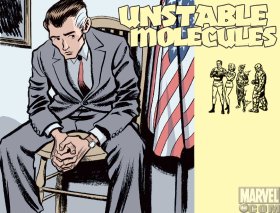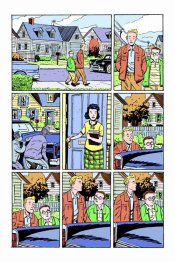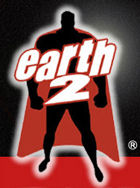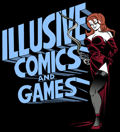|
Unstable
Molecules #1
writer: James Sturm
artists: Guy Davis and R. Sikoryak
A few
decades ago, science fiction writer Philip Jose Farmer produced
a pair of "biographies" of pulp heroes. In them, he posited
that Tarzan and Doc Savage were real people whose exploits
had been greatly exaggerated on more than one occasion. Great
fun on their own, Farmer expanded his biographical work by
including a "family tree" that connected most major fictional
heroes of the 19th and 20th centuries, and more than a few
minor ones.
His work,
which has spawned a dedicated following, has obvious echoes
in pieces like Alan Moore and Kevin O'Neill's League
of Extraordinary Gentlemen.
(And there are sites that have tied Moore's work in with Farmer's,
most notably The
Wold Newton Chronicles.) But all those works tie disparate
fictions together.
With
this week's Unstable Molecules, Marvel has thrown its
own spin on the sub-genre. Instead of sharing a fictional
universe (which the Fantastic Four already do), the book presents
us with a Fantastic Four that might have existed.
Writer
James Sturm asks us to accept that Lee and Kirby took the
real team's adventures and adapted them into heavily fictionalized
comic book adventures. But the big question is, in making
them less fantastic, are they really more interesting?
Already
the premise has some intriguing hooks. In the Marvel Universe,
we've long moved past the point where the Fantastic Four's
cold war origins make any sense. Reaching back to 1958, Sturm
does a good job building up the paranoia, and in the case
of Johnny and Sue Sturm (namesakes explained in a post-script),
the limitations of the era. In the process, he also sets up
an offstage Dr. Doom stand-in with a believable motivation.
Here
Reed Richards works as a professor at Columbia University,
his main thrust of interest sub-atomic particles. Rather than
leading him to space travel or The Negative Zone (yet), the
research focuses this more pragmatic Reed on the exciting
world of …textiles. Mundane perhaps, but sensible.
Still
engaged to Reed, Sue takes care of her younger brother Johnny,
and unknowingly suffers slightly crude innuendos from Reed's
colleagues. Though still interested in cars, the "real" Johnny
is a far cry from the cool teen portrayed by Lee and Kirby.
Bullied, a little sullen, Johnny retreats into the pages of
a comic book for all sorts of gratification.
Completely
separate at this point is Ben Grimm, here a fight promoter
and trainer. His scenes have the feel of a typical boxing
melodrama. Perhaps Stan Lee borrowed from Grimm's life again
when creating Daredevil. How this rough and tumble character
ties in with the rest of the four remains completely unclear.
We do
know from this issue that the government has called Reed in
to work with Werner Von Braun. Frightened by Sputnik, the
U.S. needs its brightest minds on the space program, and we
need only one guess to see the seeds of the well-known fictionalized
origin of the Fantastic Four. But more than ever, you have
to wonder how the heck Sue and Johnny will get aboard that
rocket.
Helping
it all work is Guy Davis, perhaps best known for his work
on Vertigo's Sandman Mystery Theater. Something about
his detailed but simple style evokes the past, dimly resembling
novelistic illustrations. Providing a counterpoint to Davis
is R. Sikoryak, reproducing panels from a non-existent Stan
Lee project called Vapor Girl. (Shades of The Sentry!)
So far, the conceit works.
Sturm
offers a finely detailed afterpiece which adds to his illusion
(or delusion). Citing biographical works of the foursome,
he also announces future work detailing their adventures,
all with titles from regular comic continuity.
While
it's all clever, the book doesn't really reach much beyond
that. It's the curse of modern storytelling that the four
main characters are separate throughout this issue, with only
our knowledge of the FF to tie them together. If anything,
this introduction relies too heavily on that knowledge, as
all of it occurs before the events we know.
It may
be too inside an approach, and certainly not one that will
drive the mainstream audience wild. But it is interesting,
and worth following. Unstable Molecules is one more
book that proves Marvel to be interested in giving the readers
a good story first. And that's worth a lot.
Rating:

|







